Investigation of a Method for Identifying Unbalanced States in Multi-Disk Rotor Systems: Analysis of Axis Motion Trajectory Features
Abstract
:1. Introduction
2. Feature Extraction Method for Axis Motion Trajectories
2.1. Axis Trajectory Signal Purification and Denoising
2.2. Axis Trajectory Signal Preprocessing
- 1.
- Centering
- 2.
- Normalization
2.3. Axis Trajectory Signal Feature Extraction
2.3.1. Feature Point Selection
- 1.
- Pattern region division
- 2.
- Feature Point Selection Principles
2.3.2. Distance Data Sequence Calculation
3. Application Example
3.1. Experimental Equipment
3.2. Axis Trajectory Experimental Data
3.3. Axis Motion Trajectory Feature Extraction
4. Conclusions
- 1.
- SVD is well suited for purifying and denoising axis trajectories. With a small parameter count, simple parameter determination, and brief processing steps, it effectively achieves the purification and denoising of rotor system axis trajectories by truncating smaller singular values and reconstructing the signals using larger singular values that contain more feature information.
- 2.
- The distance sequence representation method accurately captures the significant geometric features of axis motion trajectories under various operating conditions, including both macroscopic shape features and microscopic texture features, facilitating further research on the classification and identification of axis trajectories.
- 3.
- The axis motion trajectory feature extraction method is applicable to multiple unbalanced states. It can effectively extract significant features of various operating states of the rotor system from the original signals, with an approximately 80% reduction in data volume compared to the initial axis trajectories, making it significant for judging the operating states of the rotor system.
Author Contributions
Funding
Institutional Review Board Statement
Informed Consent Statement
Data Availability Statement
Conflicts of Interest
References
- Wang, L.Q.; Cui, L.; Zheng, D.Z.; Gu, L. Nonlinear Dynamics Behaviors of a Rotor Roller Bearing System with Radial Clearances and Waviness Considered. Chinese. Chin. J. Aeronaut. 2008, 21, 86–96. [Google Scholar]
- Zhang, W.B.; Zhou, X.J.; Li, J.S.; Shen, L.; Lin, Y.; Yang, X.Y. Purification of rotor center’s orbit based on generalized morphological filter. J. Zhejiang Univ. (Eng. Sci.) 2010, 44, 893–896. [Google Scholar]
- Guo, M.J.; Li, W.G.; Yang, Q.J.; Zhao, X.Z. Purification of the axis trajectory of a rotor supported by sliding bearings based on the number rule of effective singular values. J. Vib. Shock 2019, 38, 155–161. [Google Scholar]
- Liu, C.; Wu, Y.J.; Zhen, C.G. Rolling Bearing Fault Diagnosis Based on Variational Mode Decomposition and Fuzzy C Means Clustering. Proc. CSEE 2015, 35, 3358–3365. [Google Scholar]
- Su, Z.N.; Ma, J.; Wang, X.D.; Xiong, X. Rapid purification of rotor system axis trajectory based on improved SVD algorithm. J. Vib. Shock 2023, 42, 144–154. [Google Scholar]
- Liu, X.N.; Liu, P.; Liu, S.M.; Yang, C.M. A novel integrated morphology-wavelet filter algorithm used for ultra high-speed protection of power systems. Proc. CSEE 2002, 22, 19–24. [Google Scholar]
- Zhou, J.B.; Shi, W.F.; Lan, Y.; Zhang, W.; Lu, J. Location and Identification of Micro-Grid Power Quality Disturbances Based on Modified Morphological Filter and Arc Length Differential Sequence. Trans. China Electrotech. Soc. 2017, 32, 21–34. [Google Scholar]
- Hu, A.J.; Tang, G.J.; An, L.S. De-noising technique for vibration signals of rotating machinery based on mathematical morphology filter. J. Mech. Eng. 2006, 42, 127–130. [Google Scholar] [CrossRef]
- An, L.S.; Hu, A.J.; Tang, G.J.; Xiang, L. Purification of rotor center’s orbit with mathematical morphology filters. J. Power Eng. 2005, 25, 550–553, 586. [Google Scholar]
- Guo, M.J.; Li, W.G.; Yang, Q.J.; Zhao, X.Z. Sparse Algorithm-Based Purification of Multi-Condition Axis Trajectory of Large Rotor. J. South China Univ. Technol. (Nat. Sci. Ed.) 2020, 48, 45–53. [Google Scholar]
- Li, Z.; Li, W.G.; Zhao, X. Feature Frequency Extraction Based on Principal Component Analysis and Its Application in Axis Orbit. Shock Vib. 2018, 2018, 2530248. [Google Scholar] [CrossRef]
- Qi, K.Y.; He, Z.J.; Zi, Y.Y. Application of Empirical Mode Decomposition Method to Friction Fault Diagnosis for Gas Turbo. J. Vib. Meas. Diagn. 2006, 4, 265–268+329. [Google Scholar]
- Liu, D.; Zeng, H.; Xiao, Z.; Peng, L.; Malik, O.P. Fault diagnosis of rotor using EMD thresholding-based de-noising combined with probabilistic neural network. J. Vibroeng. 2017, 19, 5920–5931. [Google Scholar] [CrossRef]
- Jiang, F.; Zhu, Z.; Li, W.; Xia, S.; Zhou, G. Lifting load monitoring of mine hoist through vibration signal analysis with variational mode decomposition. J. Vibroeng. 2017, 19, 6021–6035. [Google Scholar] [CrossRef]
- Guo, M.J.; Li, W.G.; Yang, Q.J.; Zhao, X.Z.; Tang, Y.L. Amplitude filtering characteristics of singular value decomposition and its application to fault diagnosis of rotating machinery. Measurement 2020, 154, 107444. [Google Scholar] [CrossRef]
- Zhang, J.R.; Li, W.G.; Li, Z.; Zhao, X.Z. Purification for a large rotor axis’s orbit based on the difference spectrum theory of singular value. J. Vib. Shock 2019, 38, 199–205. [Google Scholar]
- Zhao, X.Z.; Ye, B.Y. Similarity of signal processing effect between Hankel matrix-based SVD and wavelet transform and its mechanism analysis. Mech. Syst. Signal Process. 2009, 23, 1062–1075. [Google Scholar] [CrossRef]
- Tang, M.X.; Wu, X.J.; Cong, M.; Guo, K. A method based on SVD for detecting the defect using the magnetostrictive guided wave technique. Mech. Syst. Signal Process. 2016, 70, 71601–71612. [Google Scholar] [CrossRef]
- Zhao, X.Z.; Shao, Q.P.; Ye, B.Y.; Cheng, T.J. Matrix Dimension Considering Frequency Factor in Singular Value Decomposition. J. Mech. Eng. 2019, 55, 7–16. [Google Scholar]
- Ding, J.M.; Lin, J.H.; Zhao, J. Detection of the Dynamic Imbalance with Cardan Shaft in High-speed Train Applying EEMD-Hankel-SVD. J. Mech. Eng. 2015, 51, 143–151+159. [Google Scholar] [CrossRef]
- Zhao, X.Z.; Ye, B.Y.; Chen, T.J. Selection of effective singular values based on curvature spectrum of singular values. J. South China Univ. Technol. (Nat. Sci. Ed.) 2010, 38, 11–18+23. [Google Scholar]
- Chen, X.Y.; Zhang, K.W. Application of a new moment invariant to identification of axis orbit in hydro-generator unit. J. South China Univ. Technol. (Nat. Sci. Ed.) 2006, 34, 79–81+84. [Google Scholar]
- Wang, B.S.; Liu, Y.Q.; Zhang, B. Characteristics analysis on bearing rotor system of high-speed train under variable speed conditions. Chin. J. Theor. Appl. Mech. 2022, 54, 1839–1852. [Google Scholar]
- Jia, R.; Zhang, P.G.; Zhang, X.W.; Wu, H.; Lu, Y. Identification of shaft centerline orbit of hydropower units based on neural network improved by genetic algorithm. J. Hydroelectr. Eng. 2013, 32, 277–281. [Google Scholar]
- Boldys, J.; Flusser, J. Extension of moment features’ invariance to blur. J. Math. Imaging Vison 2008, 32, 227–238. [Google Scholar] [CrossRef]
- Fu, B.; Zhou, J.Z.; Chen, W.Q.; Yu, B.H. A method based on Fourier Descriptors to Recognize Shaft Orbit. Autom. Electr. Power Syst. 2004, 28, 40–44+50. [Google Scholar]
- Burla, A.; Haist, T.; Lyda, W.; Osten, W. Fourier descriptors for defect indication in a multiscale and multisensory measurement system. Opt. Eng. 2011, 50, 043603. [Google Scholar] [CrossRef]
- Fu, B.; Zhou, J.Z.; Peng, B.; Zhao, B. Auto-recognition of Shaft Orbits Using Affine Moment Invariants. J. South China Univ. Technol. (Nat. Sci. Ed.) 2007, 35, 119–122. [Google Scholar]
- Chen, X.Y.; Yan, H.Q.; Sun, J.P. Shaft Orbits Identification of Hydroelectric Generators Based on PSO-BP and Combined Moment. J. Vib. Meas. Diagn. 2016, 36, 108–114. [Google Scholar]
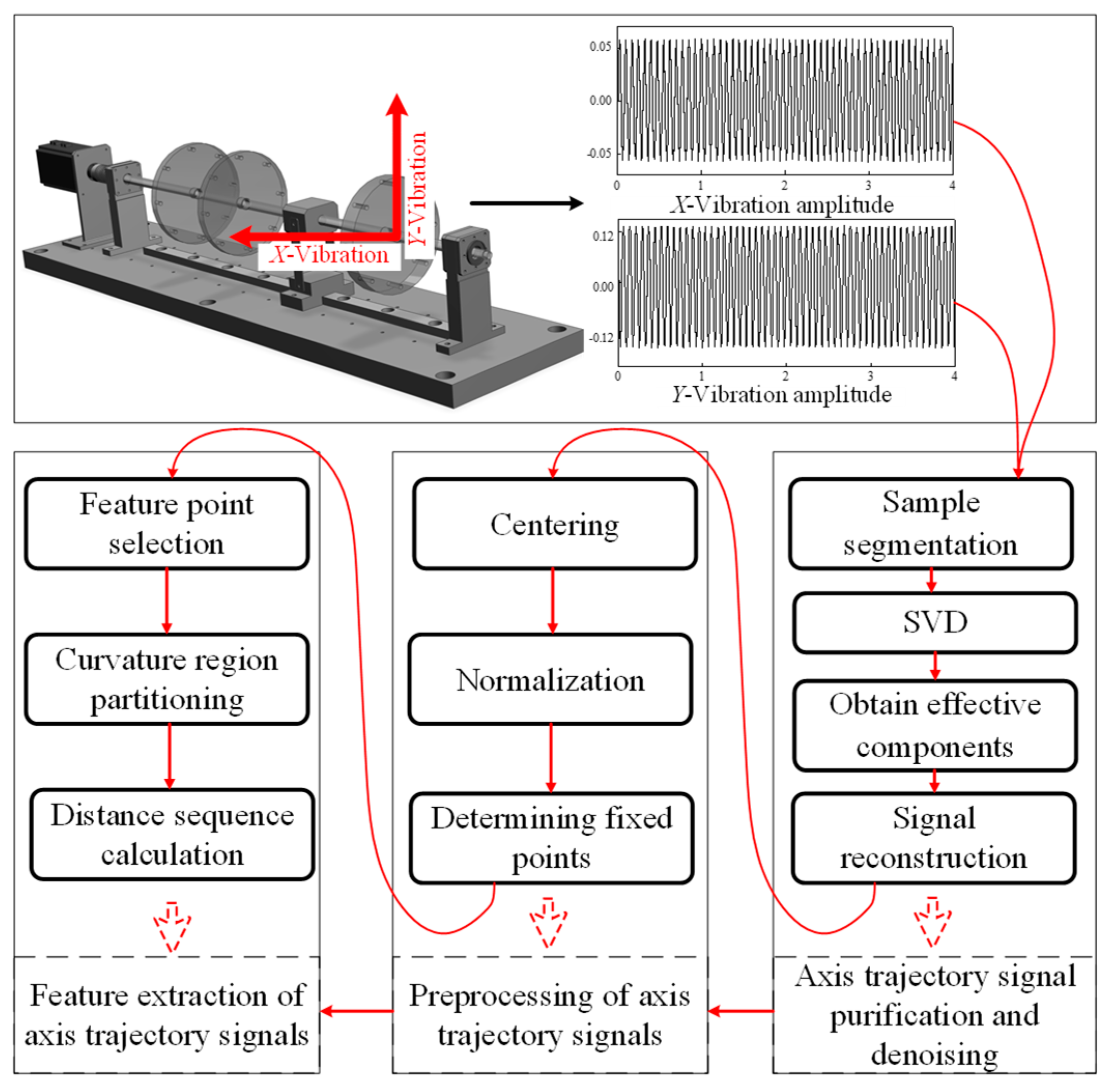




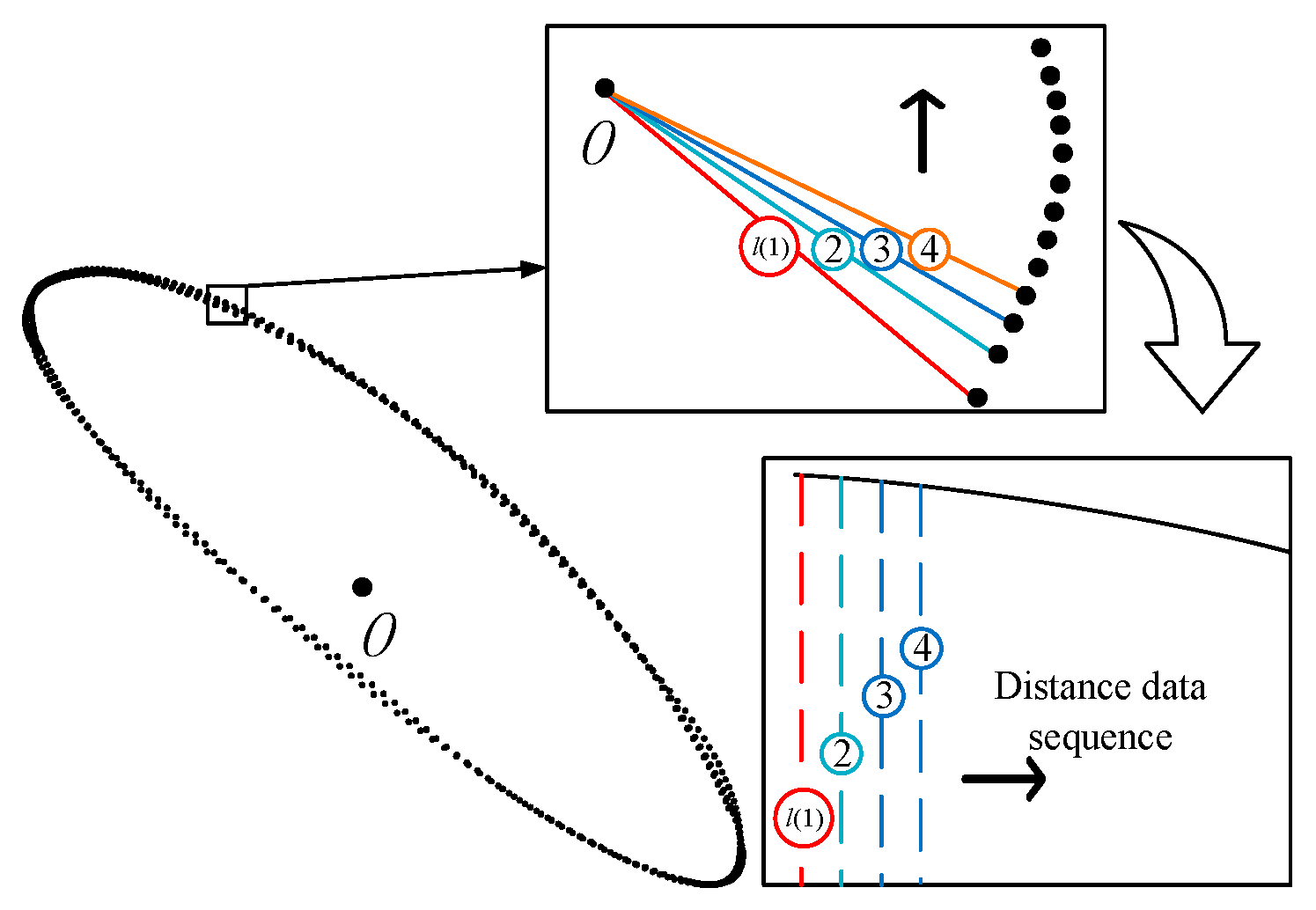
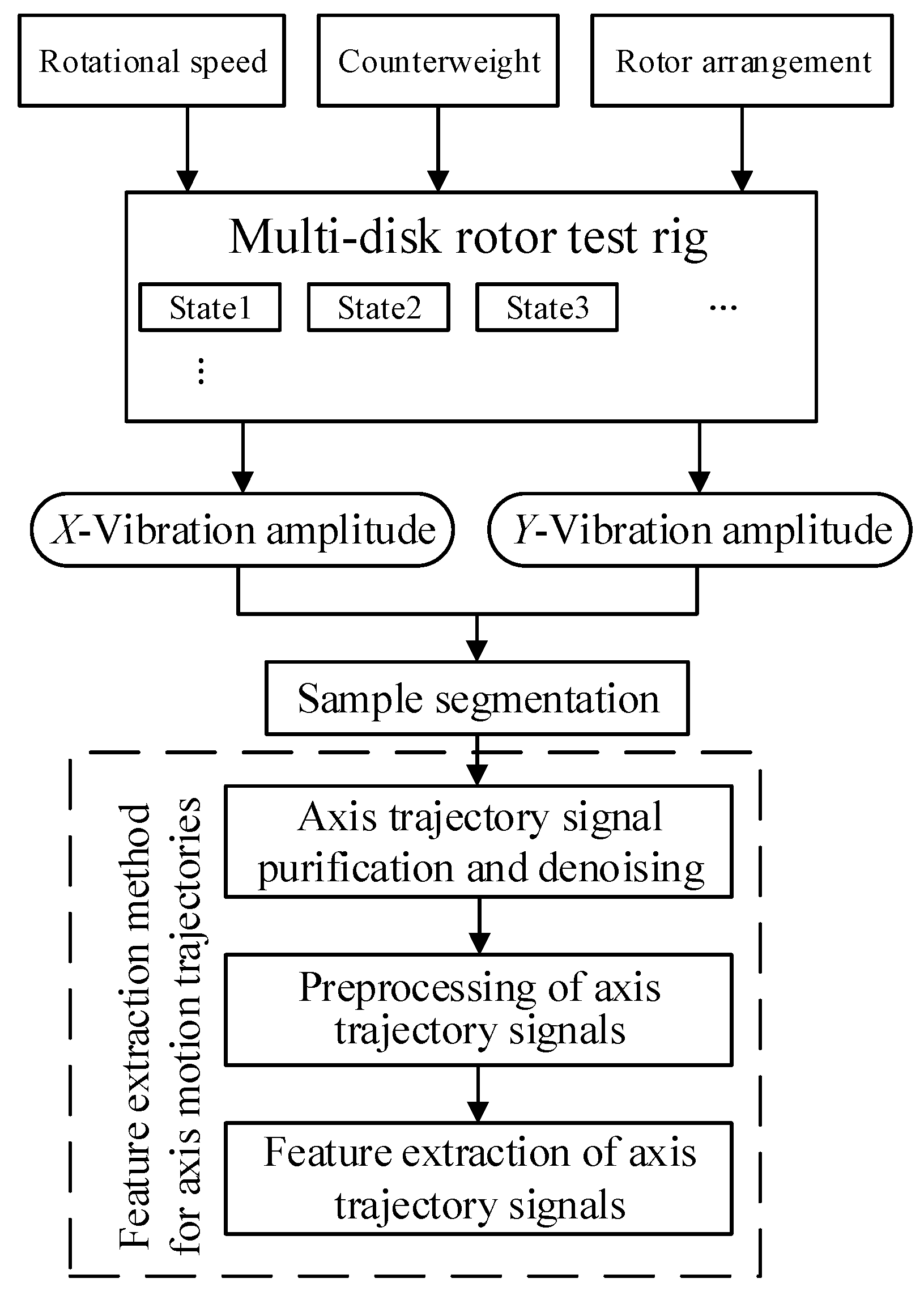

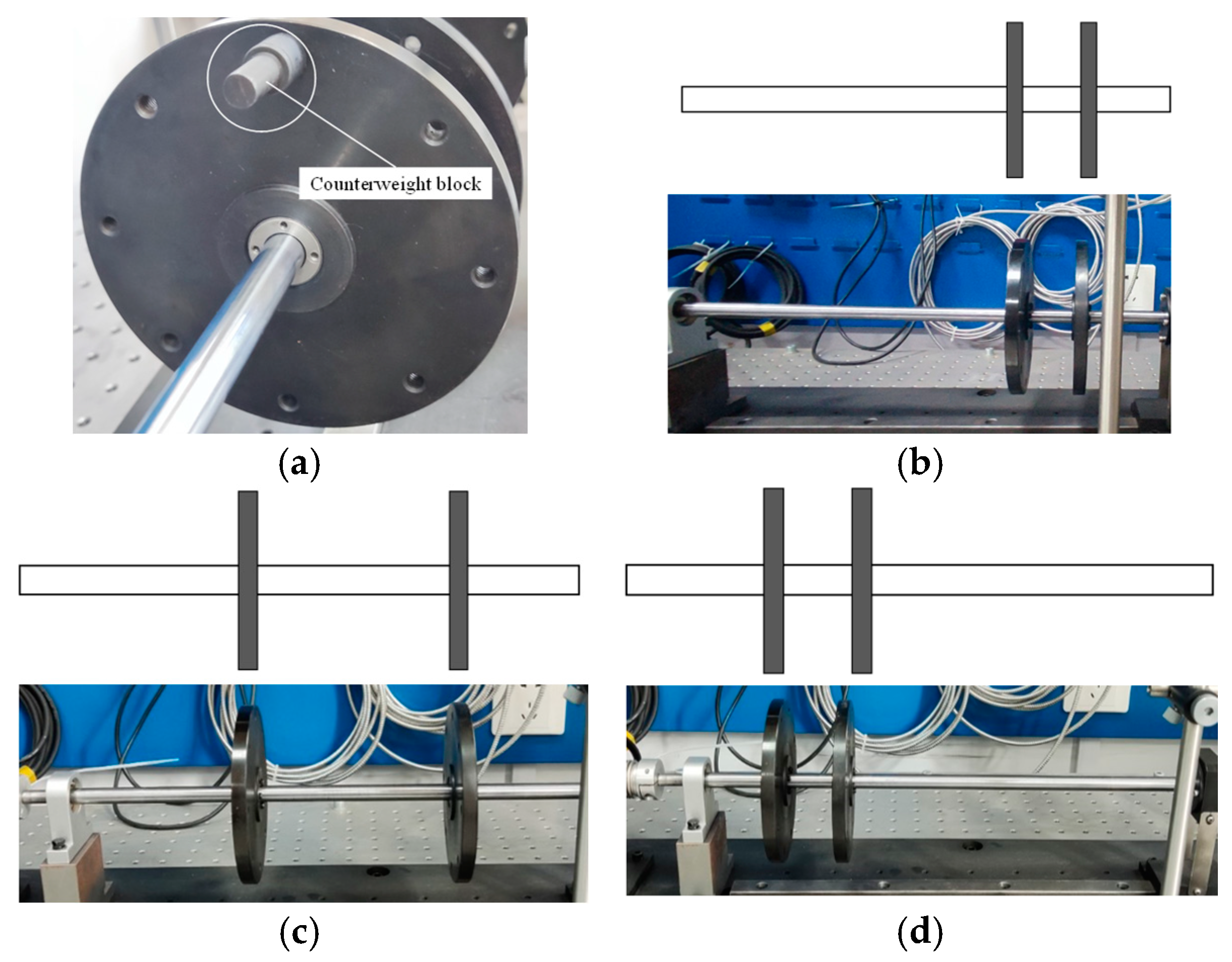

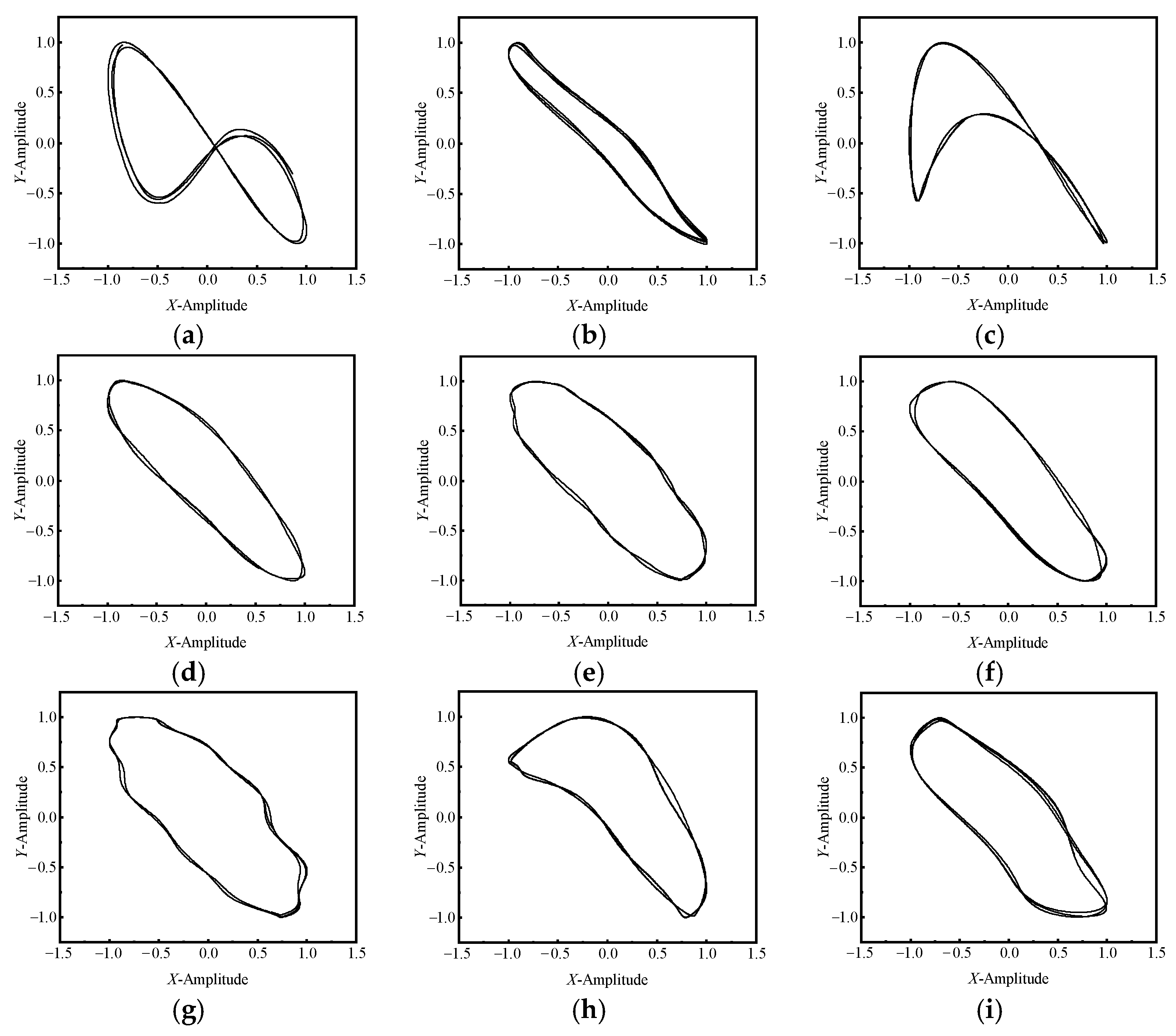
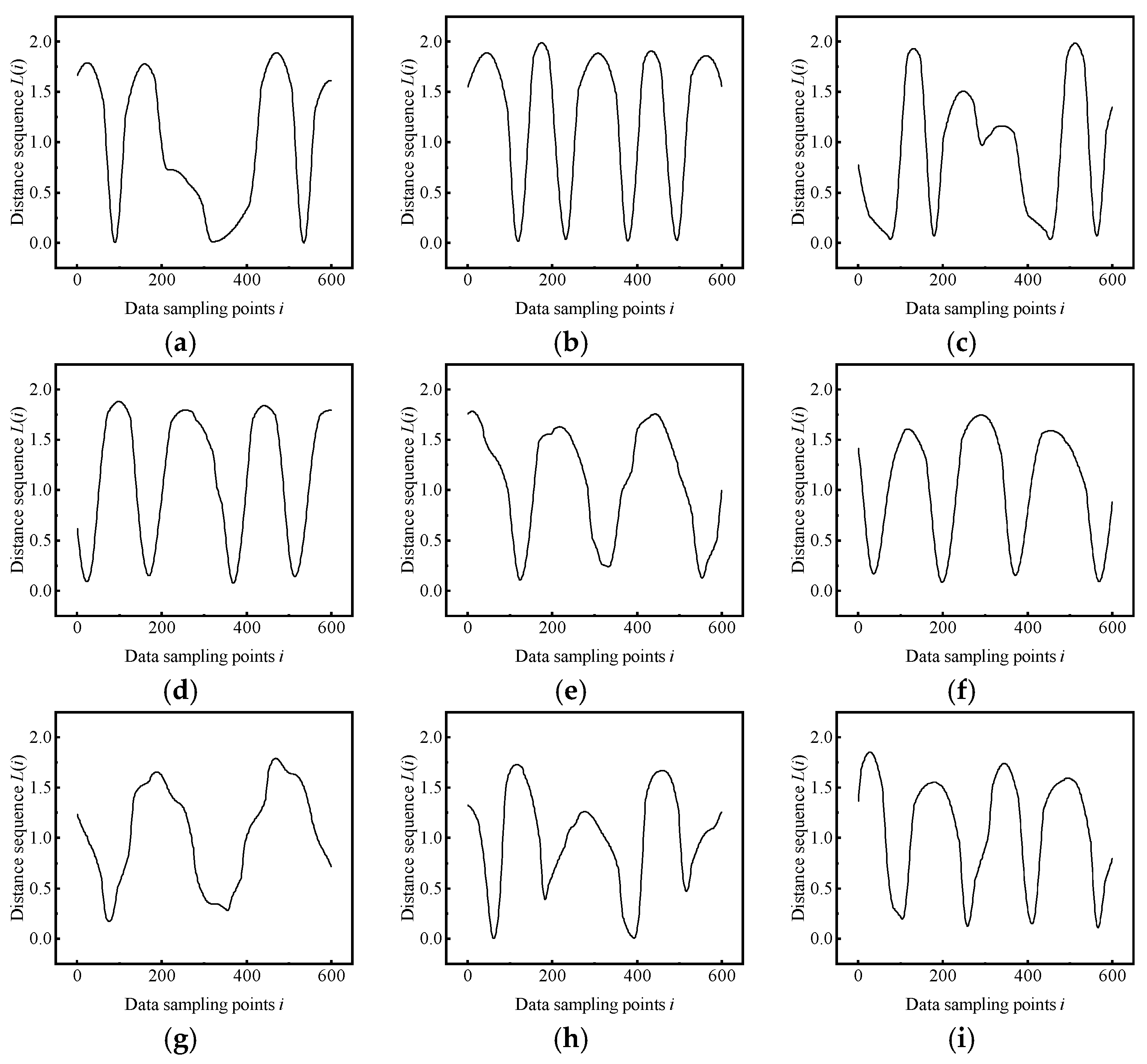
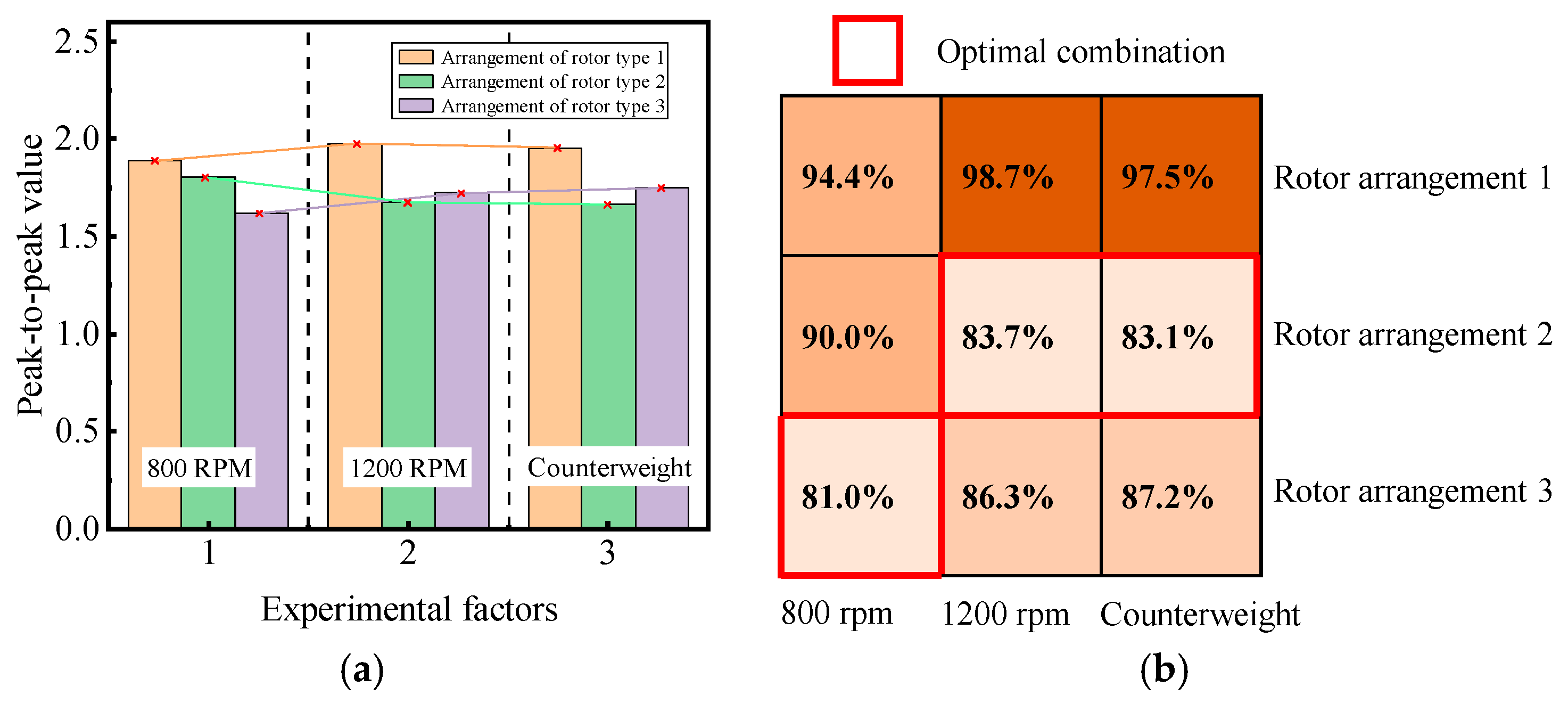
| Rotor Arrangement | Experimental Conditions | Rotational Speed (r/min) | Counterweight |
|---|---|---|---|
| Rotor arrangement type 1 | 1 | 800 | 0 |
| 2 | 1200 | 0 | |
| 3 | 800 | 1 | |
| Rotor arrangement type 2 | 4 | 800 | 0 |
| 5 | 1200 | 0 | |
| 6 | 800 | 1 | |
| Rotor arrangement type 3 | 7 | 800 | 0 |
| 8 | 1200 | 0 | |
| 9 | 800 | 1 |
Disclaimer/Publisher’s Note: The statements, opinions and data contained in all publications are solely those of the individual author(s) and contributor(s) and not of MDPI and/or the editor(s). MDPI and/or the editor(s) disclaim responsibility for any injury to people or property resulting from any ideas, methods, instructions or products referred to in the content. |
© 2024 by the authors. Licensee MDPI, Basel, Switzerland. This article is an open access article distributed under the terms and conditions of the Creative Commons Attribution (CC BY) license (https://creativecommons.org/licenses/by/4.0/).
Share and Cite
Peng, J.; Dong, E.; Yang, F.; Sun, Y.; Zhong, Z. Investigation of a Method for Identifying Unbalanced States in Multi-Disk Rotor Systems: Analysis of Axis Motion Trajectory Features. Appl. Sci. 2024, 14, 6884. https://doi.org/10.3390/app14166884
Peng J, Dong E, Yang F, Sun Y, Zhong Z. Investigation of a Method for Identifying Unbalanced States in Multi-Disk Rotor Systems: Analysis of Axis Motion Trajectory Features. Applied Sciences. 2024; 14(16):6884. https://doi.org/10.3390/app14166884
Chicago/Turabian StylePeng, Jianjun, En Dong, Fang Yang, Yuxiang Sun, and Zhidan Zhong. 2024. "Investigation of a Method for Identifying Unbalanced States in Multi-Disk Rotor Systems: Analysis of Axis Motion Trajectory Features" Applied Sciences 14, no. 16: 6884. https://doi.org/10.3390/app14166884





